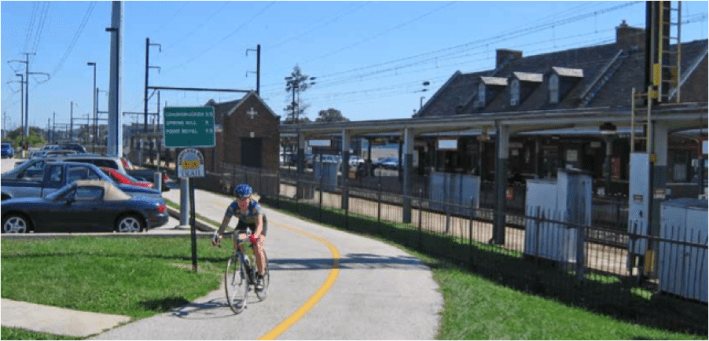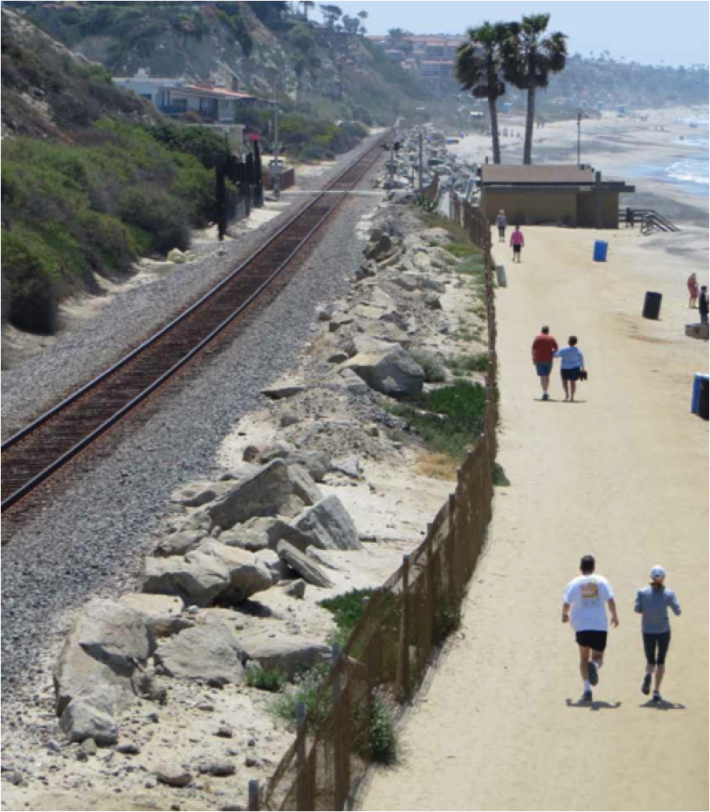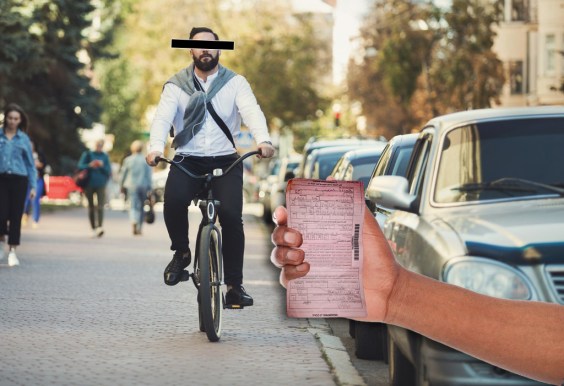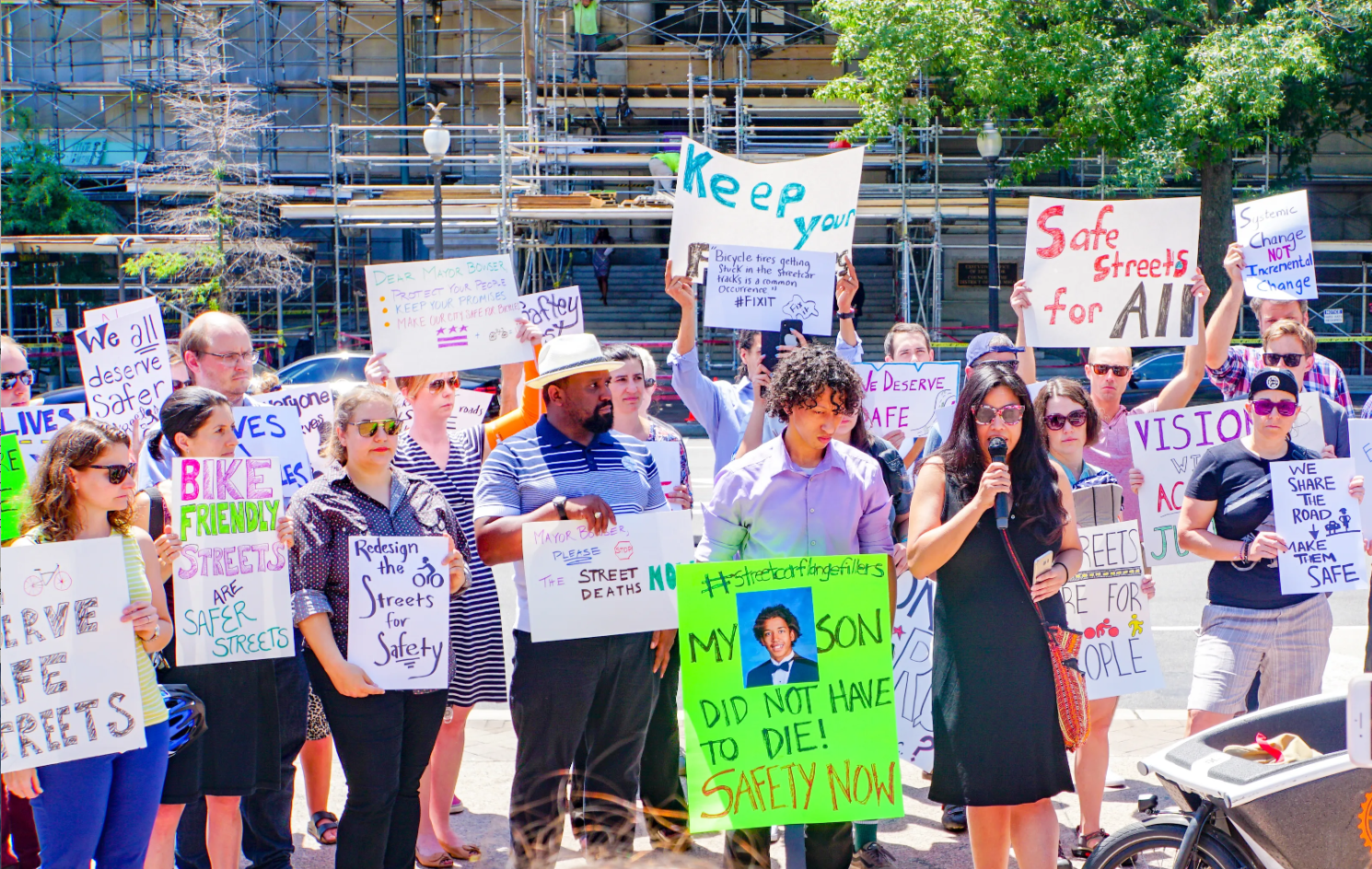
This post is part of a series featuring stories and research that will be presented at the Pro-Walk/Pro-Bike/Pro-Place conference September 8-11 in Pittsburgh.
You’ve heard of rail-trails -- abandoned rail lines that have been turned into multi-use paths for biking and walking. There are more than 21,000 miles of rail-trails across the country, in urban, suburban, and rural areas.
But these trails don't need to be built on the graves of defunct rail lines. A growing number of them, in fact, are constructed next to active rail lines. In 1996, there were slightly less than 300 miles of these trails. Today there are about 1,400 miles.
Railroads tend to be skittish about approving walking and biking routes because they fear liability if someone gets injured. Even so, 43 percent of rails-with-trails, as they’re known, are located wholly within railroad rights-of-way, while another 12 percent have some segments inside the right-of-way. So negotiating with railroads -- from Class I freight railroads to urban light rail operators -- is possible, if you know how to approach them.
At the Pro-Walk Pro-Bike conference in Pittsburgh next month, Kelly Pack of the Rails-to-Trails Conservancy will be joined by Thomas Baxter of Pittsburgh’s Friends of the Riverfront and Jerry Walls, who chairs the board of the SEDA-COG joint rail authority in central Pennsylvania, to give tips on how to create new rails-with-trails.
While railroads are wary of opening up space near tracks to people walking and biking, there are ways to get through to them. And if advocates in your area aren’t convinced that walking and biking alongside a noisy railroad track is such a great idea, there are arguments to address their perspective, too. Here are eight great things about rails-with-trails.

They help railroads reduce one of their most vexing safety problems: trespassing. By planning for mobility along and even across railroad tracks, railroads can help prevent some of the 430 fatalities that occur each year when people cross tracks where they shouldn't. In its comprehensive study of rails-with-trails, the Rails-to-Trails Conservancy found only one record of a fatality (and two injuries) on such facilities in 20 years:
This suggests that providing a well-designed pathway dedicated for cyclists and pedestrians provides a safe travel alternative and reduces the incentive to trespass or use the tracks as a shortcut. Such pathways often include some form of barrier between the trail and the active railway, and carefully-planned intersections if the trail crosses the tracks.
Rather than fear the liability associated with permitting a trail along an active rail corridor, railroads should embrace them as a safety measure, as they help control crossings, making them safer and more predictable. “That is the biggest selling point for railroads,” said Jerry Walls of SEDA-COG. Many railroads have prohibitions on new at-grade crossings that slow trains down and introduce the possibility of injury. Where trail managers can’t find a way to get a safe at-grade crossing approved, they can build grade-separated crossings. While costly, these create valuable connections for pedestrians and prevent headaches for the railroads.
They’re perfect places to walk and bike. These rights-of-way have gentle grades that are easy and accessible for all trail users, says Kelly Pack of RTC. They also tend to be contiguous and uninterrupted, with fewer street crossings than normal trails or on-road facilities. And though nearly 60 percent of existing trails are within 30 feet of the tracks, at least 70 percent of them have physical barriers separating them from the tracks.
They’re natural transportation connections, ideally suited to both recreational and utilitarian biking and walking. By following a railroad corridor, rail-trails add a mobility option to an established route between destinations that have grown up around the rail line. Thomas Baxter says the Three Rivers Trail in Pittsburgh was initially mostly used for recreational biking, but more and more commuters are on the trail.

They enhance transit by improving access. “As more cities and communities develop their transit infrastructure, trails often go hand in hand with light rail,” said Kelly Pack of RTC, “so you have the ability to get people to transit hubs and stations by bike or by foot. Increasing the multimodal network is a goal of many communities.”
They can be simpler to build than other trails. As Walls noted, “It is a whole lot easier to work with one property owner that controls the entire length of what you’re trying to develop as a trail than to work with hundreds of property owners.” Even when that one owner is a nervous freight railroad.
In many places, there aren’t a lot of trains going by. About 40 percent of these trails see no more than five trains pass per day, and in some cases the frequency is no more than one per week.
In some places, there are lots of trains going by. “You get to experience from close up the magic of transport,” Pack said. “A lot of times we see kids out there with their parents, and when the trains come by they stop and stare. It’s an exciting thing to see a train up that close.” Walls agrees. “I’ve watched people line up where there’s good vantage points to watch for trains while they’re on a bicycle,” he said.
They utilize antiquated infrastructure. Many rail-trails -- including the C&O Canal Towpath that stretches from the Georgetown neighborhood of Washington, DC, to Cumberland, Maryland, 185 miles away -- are built on the towpaths of old canals. Those are paths where oxen would walk, pulling barges behind them. Suffice it to say, transportation has advanced since those days and the oxen are out of work. Railroads often took over those canal corridors. Jerry Walls said SEDA-COG is in the process of conveying their towpath to the North Branch Canal Trail. “We don’t need that,” he said. “But we’re going to keep the canal bed itself as a safety barrier adjacent to our railroad.” Asking just for the towpath and not the canal is a good approach to take with railroads, he counsels.
RTC's report on rails-with-trails is an excellent resource for communities interested in how to acquire the right-of-way for a trail along an active rail corridor, complete with case studies of some of the country's successful rail-trails.





